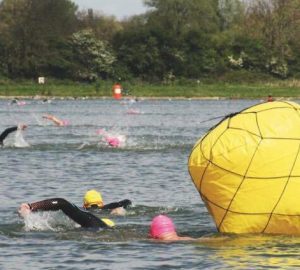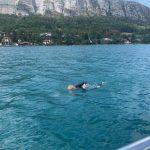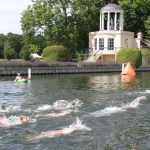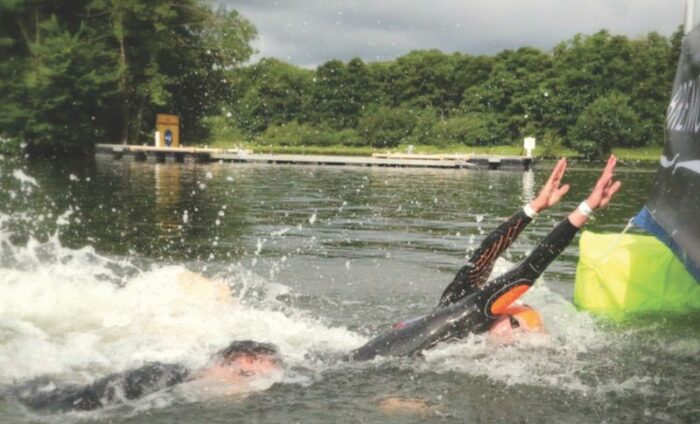
Should you swim hard?
In part of three of his series on mind-body training, Terry Laughlin encourages us to think differently about effort
Swim “hard.” When responding to that command, how do you put it into action–and with what result? Is there a better way to gain speed?
This is the third installment of our series on training which improves your swimming by fostering a more robust connection between brain and muscles. Mind-body training stimulates your brain to work harder as you swim. The more your brain does, the less your body must do to accomplish any goal. Last month’s instalment described how to develop a more accurate sense of the position, orientation and direction of head, torso and limbs to facilitate subtler and more effective adjustments. For example: while breathing, do you lift your head or keep it aligned with your spine?
This month, we focus on improving your effort-sensing abilities, using a valuable-but-underutilised tool called Rate of Perceived Exertion or RPE. The RPE scale originated in physiology research to describe exercise intensity levels. Athletes soon adopted it to quantify how hard they were working in training.
The original RPE scale was devised by Swedish scientist Gunnar Borg and is thus called the Borg Scale. The variety shown in the graphic includes levels from 0 to 10. I sought to increase its relevance to swimmers by creating the Total Immersion RPE scale, also shown. While the Borg scale makes reference only to levels of effort, the TI-RPE scale describes specific skill and performance goals – and stroke counts – appropriate to each level. Also, the Borg scale is most often used to promote harder efforts – half the scale is at ‘hard’ or above. The TI-RPE scale is designed to encourage swimmers to seek easier ways to accomplish any task or goal.
Why train for effort-awareness?
When coaches prescribe effort level, their vocabulary is generally limited to Easy, Medium and Hard. I long ago banished the word ‘hard’ from my coaching vocabulary. Instead, one of my mantras is: “Swim faster; the easier you can do so, the better.”
I don’t leave it at “swim faster” either. Instead I suggest process-oriented ways to change speeds: change your focal point, or incrementally increase stroke count, tempo, or how firmly the hands press during the catch. After such a change, check the pace clock to learn what output (in time) resulted from your chosen input. Then assess whether the effort you expended would be sustainable for your goal distance.
If you’re not satisfied with the speed-for-effort equation, keep experimenting until you get more speed for less effort. Become accustomed to using the TI-RPE along with time, stroke count and tempo to assess the effectiveness of your swimming. Additional benefits from effort-sensing which articulates effort levels more finely than easy-medium-hard and links to specific skill or performance goals include:
- An additional way to cultivate mindfulness while swimming.
- An aid to effective pacing. A lack of pacing skill results from poor judgement of effort. As the saying goes, “what gets measured gets improved.” Track RPE and you’ll soon have a more finely-attuned sense of effort.
- ‘Invite’ speed; don’t chase it. Rather than constantly pursuing more tolerance for hard work, discover how little your pace decreases when you swim easier – but more efficiently. You’ll then swim faster as a matter of course.
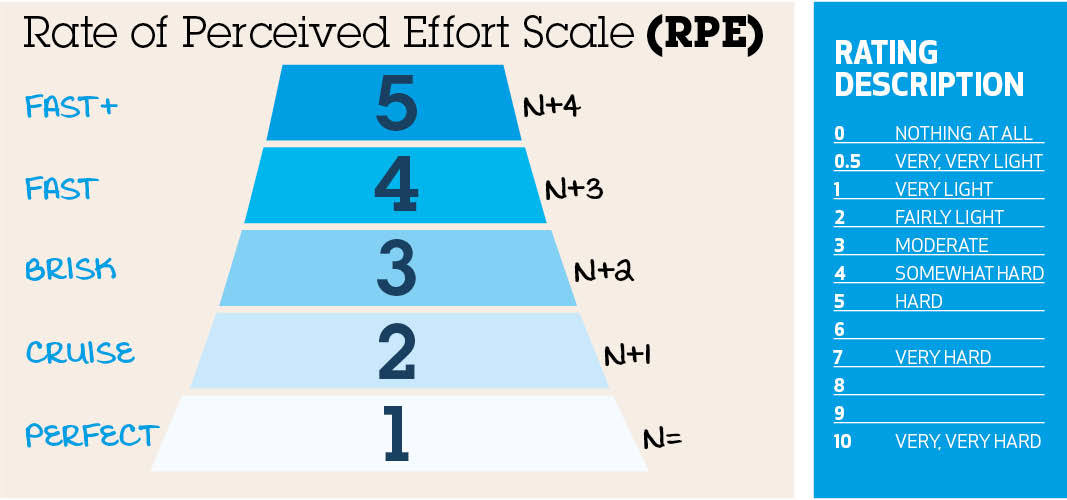
How to use RPE
TI RPE-1 “Perfect” This is the effort level required to perfect a fine point in your stroke or maintain the highest efficiency of which you are capable. In running, this would be equivalent to a light jog, or jog-walk. I begin each practice with five to ten minutes at RPE-1, seeking to instil not only great form, but a ‘relaxation baseline’ that I’ll try to sustain as I increase effort. I also swim at RPE-1 for recovery after a sustained effort at RPE-3 or above.
Swim 20% to 30% of total training volume at RPE-1.
TI RPE-2 “Cruise” This feels like conversational pace in running. RPE-2 is suitable for:
- Encoding a new skill in muscle memory during a repeat set of 15 minutes or longer. l Maintaining a steady pace – and holding form – for a continuous training swim of 800 to 1500 metres.
- A novice open water swimmer during a race.
It’s also the smartest swim-leg pace for the 90% of triathletes with no formal swim racing experience
Swim 30% to 40% of total volume at RPE-2.
TI RPE-3 “Brisk” This produces a feeling of hitting your stride at a strong and steady – but quite sustainable – pace. You feel overall relaxation and well-controlled in technique. RPE-3 is suitable for training sets such as 10-15 x 100, 5 to 8 x 200, or 2-3 x 500y/m.
In racing, it’s suitable for the last third to half of distance races (1.5 to 3k) in pool or open water for moderately experienced swimmers, and the swim leg for the 10% of triathletes who are experienced swimmers.
Swim 20% to 40% of total volume at RPE-3.
Less experienced, or still-developing, swimmers will progress fastest by doing the bulk of training at RPE 1-3. RPE-4 and 5 are most suitable for experienced and high-skilled swimmers.
TI RPE-4 “Race” How do you visualise yourself feeling while swimming the race of your life? (Visualise a specific situation – eg, how you’d like to feel between 300 and 1200 metres of a 1.5K race.) Strive to feel this at RPE-4. Use this effort level for your fastest repeat in descending or multi-descending sets, or fast repeats during speedplay sets.
Swim 10% to 20% of total volume at RPE-4.
TI RPE-5 “Race-Plus” Anything faster than race speed – while striving to maintain a long, core-driven stroke. Avoid struggle. An example: You need a higher gear while swimming shoulder-to-shoulder with a rival in the final 50 metres of a 1.5K open water race. RPE-5 training trains you to stay efficient during that final sprint.
Use RPE-5 for fast 25s or speedplay 50s or highly demanding SPL+Tempo combinations. You’ll generally be able to sustain this effort – and remain efficient – for 30 seconds or less.
Swim 0% to 5% of total volume at RPE-5.
Green Zone and RPE
There should be a general relationship between RPE and stroke count. As a rule of thumb:
Perfect: Swim at your lowest Green Zone stroke count.
Cruise: Swim at +1 SPL to lowest Green Zone count.
Brisk: Swim at +2 to lowest count.
Race: Swim at +3 to lowest count
Race-Plus: Find it extremely challenging to maintain +2 to +3.
Sample sets
-
Swim 3 x 400m, or 2 rounds of [3 x 200m], or 4 rounds of [3 x 100m]. #1 Perfect; #2 Cruise; #3 Brisk.
-
Swim 2 rounds of [200m Perfect +150m Cruise +100 Brisk +50m Race]
-
Swim 4 rounds of [3 x 50m] as 50m Cruise; 50m Brisk; 50m Race
-
Swim 8 to 10 x 100m as [50m Cruise + 50m Brisk]
-
Swim 8 to 12 x 25m. Odd: Perfect at lowest stroke count; Even: Race-Plus at +2 SPL.
Expert Advice
Terry Laughlin is founder and head coach of Total Immersion and winner of six national masters championships since turning 55. The Total Immersion 2.0 Freestyle Mastery Self-Coaching Course teaches ‘Expert’ Pacing/Tempo Training and three other Mastery skills for freestyle.




